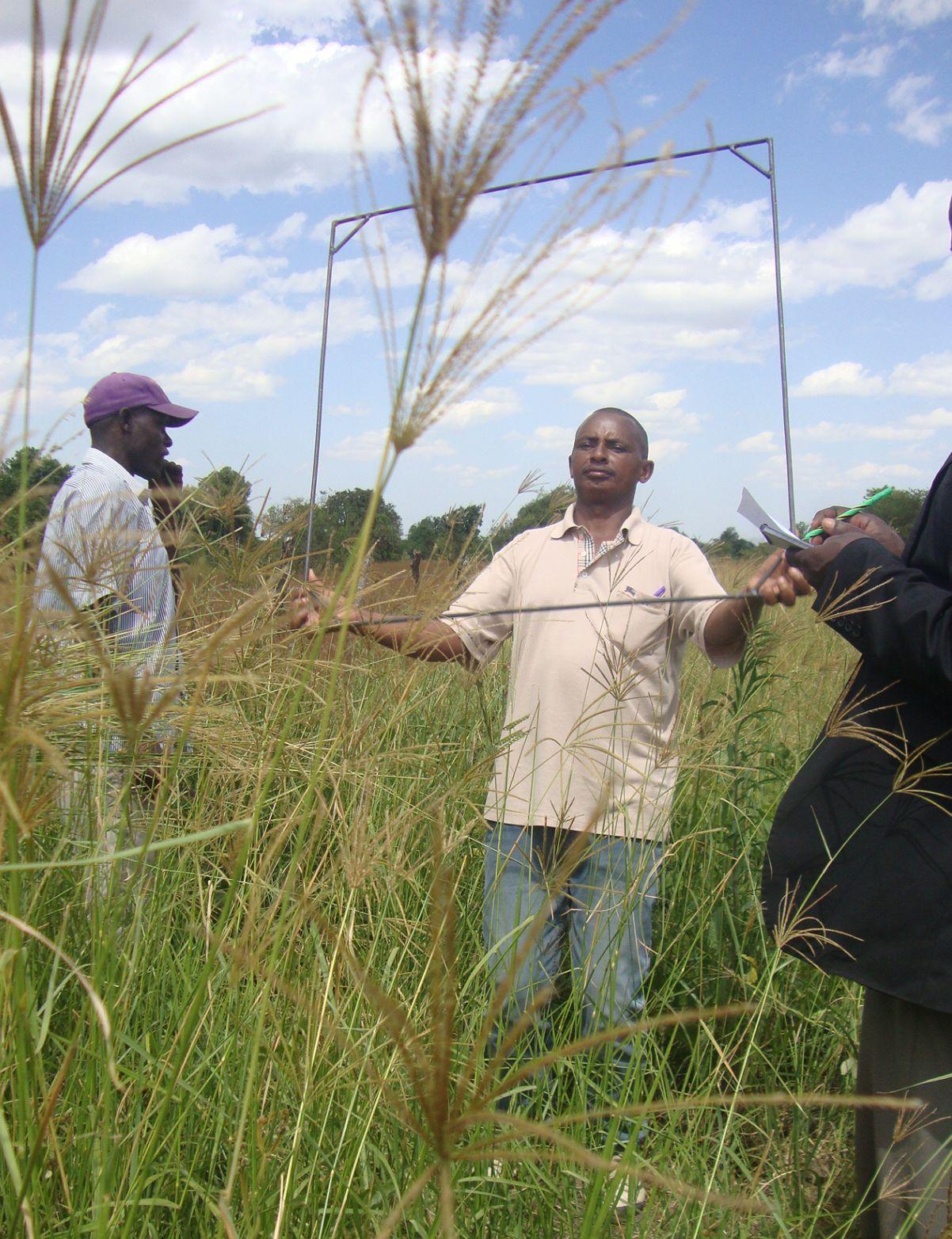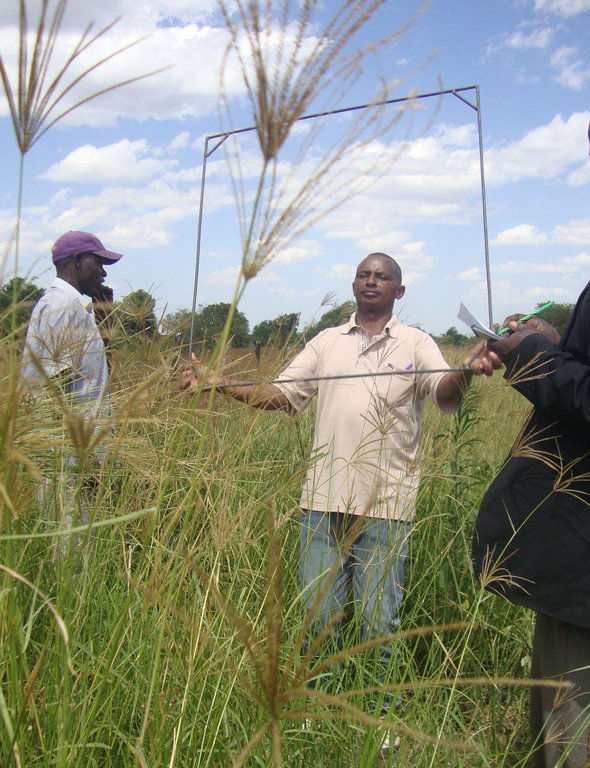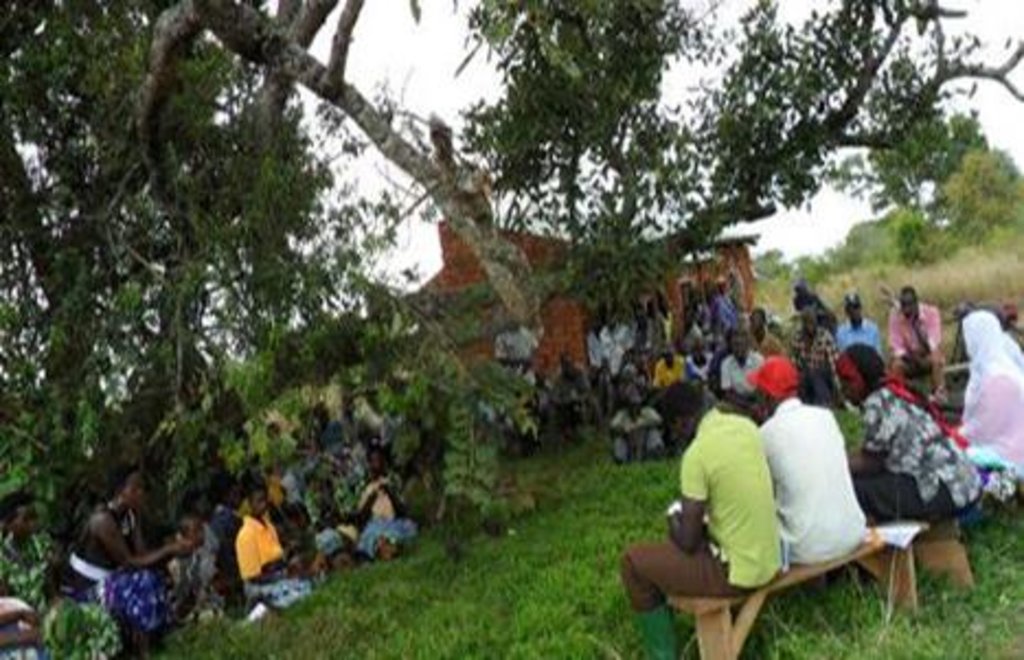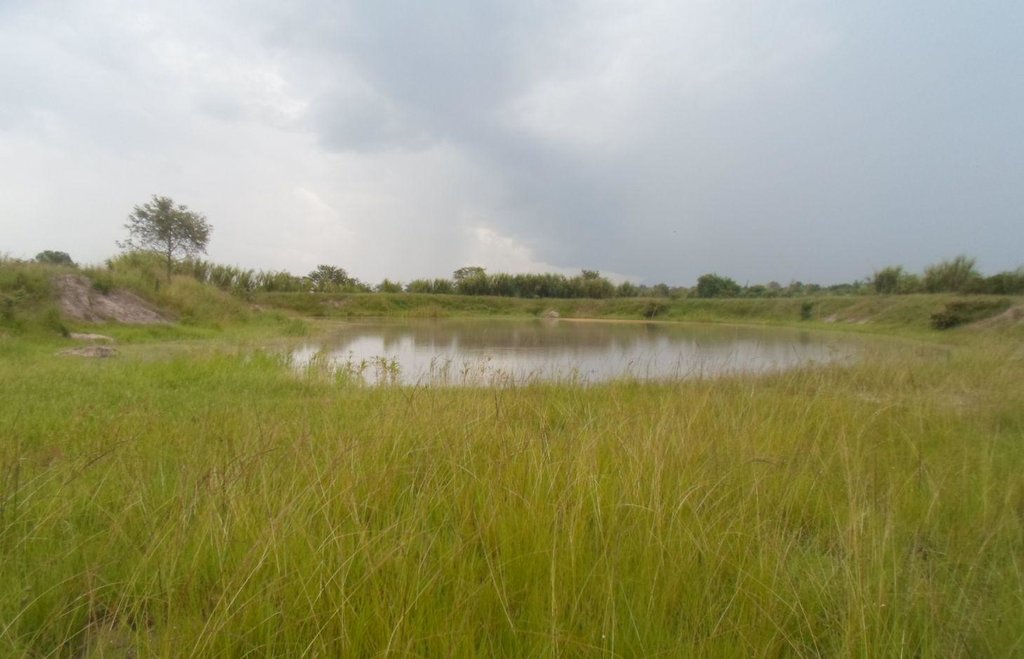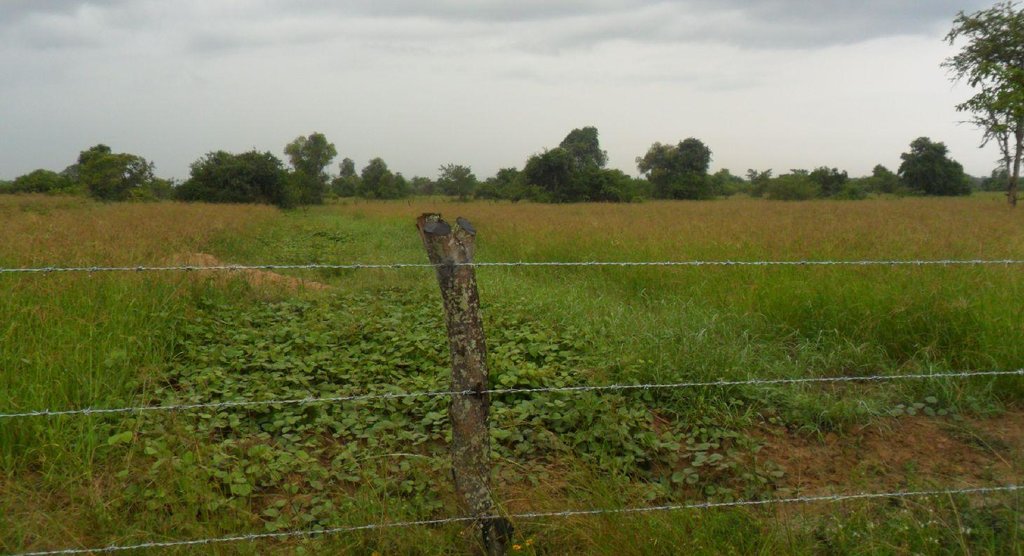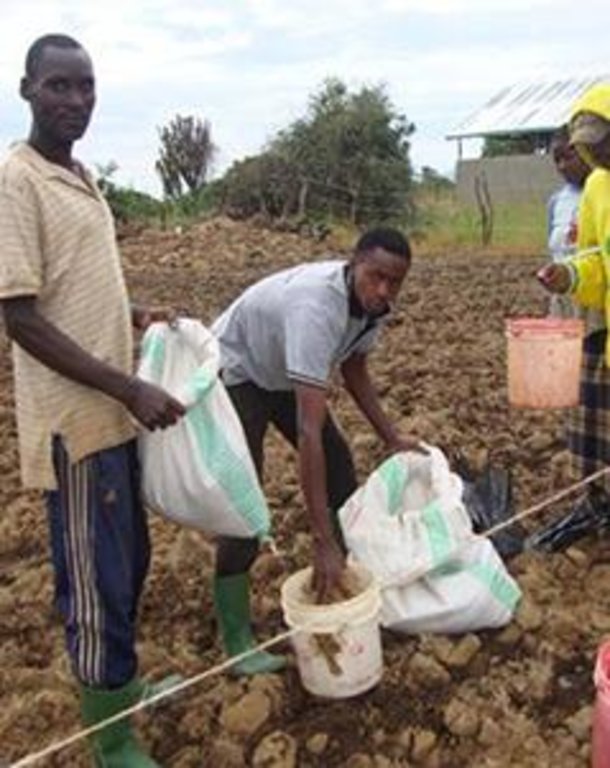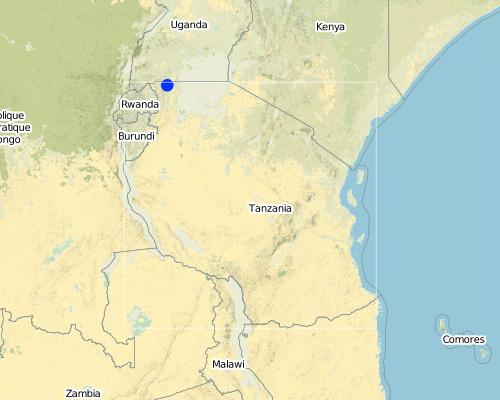Rangeland Improvement in Savanah with High Livestocks [ប្រទេសតង់សានី]
- ការបង្កើត៖
- បច្ចុប្បន្នភាព
- អ្នកចងក្រង៖ Jasson Rwazo
- អ្នកកែសម្រួល៖ –
- អ្នកត្រួតពិនិត្យ Deborah Niggli
Uboreshaji wa Nyanda za malisho katika uoto wa asili wa savana wenye ng'ombe wengi.
technologies_1314 - ប្រទេសតង់សានី
ពិនិត្យមើលគ្រប់ផ្នែក
ពង្រីកមើលទាំងអស់ បង្រួមទាំងអស់1. ព័ត៌មានទូទៅ
1.2 ព័ត៌មានលម្អិតពីបុគ្គលសំខាន់ៗ និងស្ថាប័នដែលចូលរួមក្នុងការវាយតម្លៃ និងចងក្រងឯកសារនៃបច្ចេកទេស
អ្នកជំនាញឯកទេស SLM:
Poder Alexander
Alexandra.Poder@Provinz.bz.it
PROVINCIA AUTONOMA DI BOLZANO − ALTO ADIGE Landhaus 1, Silvius-Magnago-Platz 1, 39100 Bozen
ឈ្មោះអង្គភាពមួយ (ច្រើន) ដែលបានចងក្រងឯកសារ/ វាយតម្លៃបច្ចេកទេស (បើទាក់ទង)
Missenyi District Council (Missenyi District Council) - ប្រទេសតង់សានី1.3 លក្ខខណ្ឌទាក់ទងទៅនឹងការប្រើប្រាស់ទិន្នន័យដែលបានចងក្រងតាមរយៈ វ៉ូខេត
តើពេលណាដែលទិន្នន័យបានចងក្រង (នៅទីវាល)?
04/12/2015
អ្នកចងក្រង និង(បុគ្គលសំខាន់ៗ)យល់ព្រមទទួលយកនូវលក្ខខណ្ឌនានាទាក់ទងទៅនឹងការប្រើប្រាស់ទិន្នន័យដែលបានចងក្រងតាមរយៈវ៉ូខេត:
បាទ/ចា៎
1.4 សេចក្តីប្រកាសស្តីពីចីរភាពនៃការពណ៌នាពីបច្ចេកទេស
តើបច្ចេកទេសដែលបានពណ៌នានេះមានបញ្ហាដែលផ្តោតលើការធ្លាក់ចុះគុណភាពដី, បើដូច្នេះវាមិនអាចត្រូវបានប្រកាសថាជាបច្ចេកទេសនៃការគ្រប់គ្រងប្រកបដោយចីរភាពទេ?
ទេ
2. ការពណ៌នាពីបច្ចេកទេស SLM
2.1 ការពណ៌នាដោយសង្ខេបពីបច្ចេកទេស
និយមន័យបច្ចេកទេស:
Improvement of degraded rangeland in savannah using multiple rangeland improvement techniques that complement each other to optimize livestock production and productivity sustainably.
2.2 ការពណ៌នាលម្អិតពីបច្ចេកទេស
ការពណ៌នា:
Multiple rangeland and pasture improvement techniques that combines water harvesting, rangeland reseeding and pasture establishment, livestock breeding management techniques to restore degraded rangeland in savannah with high livestock and optimize livestock production and productivity sustainably. These includes; 1. Chaco dam excavation for rain runoff harvesting mainly during the rainy season (February to April and August to December) mostly;(i).To ensure year round availability of water largely for watering livestock and partly for domestic and agriculture use especially during the main dry season when local sources (Ponds, springs or stream) are dry,(ii).To reduce soil erosion by water (lily or gully erosion, (iii).To reduce river bank erosion and silitation due direct watering of livestock in to Kagera river, (iii). To reduce the distance animal has to walk for watering and (iv) to reduce water use conflicts between herders and other land users. 2. Establishment of pasture demonstration plots where farmers are exposed to a basket choice (Low cost technique Vs high cost technique) of pasture and rangeland improvement technique either through ;( a). Tilling the land and broadcasting drought tolerant indigenous degenerated palatable pasture species of high nutritive value and, mainly (i).Grass; Cenchrus cliaris, Chloris gayana and (ii).Legumes; Centrocema puberse, Lablab purpureus, Mucuna Pluriens and Puperaria Phaseilides ) to a manured degraded rangeland; (b).i. Encouraging re-growth of proper pasture species in a degraded area to take place through clearing bushes, shrubs or trees ( leaving edible shrubs and few selected shed trees especially acacia spp which allow pasture re-growth underneath and provide shed against intense sun radiations to livestock especially during the main dry season- July to September); ii. Closing the degraded area by fencing using live indigenous trees or using wooden pole with or without barbed wire for 2 -3 years, removal of anthills and discouraging regeneration of unproductive invasive species and hence returning the rangeland to productivity;3. Genetical improvement of local cattle (Ankole or Zebu) through crossbreeding with introduced improved bull especially boran, Frisian or Mpwapwa bulls to allow farmers to keep few improved offspring of high production and productivity ;4.Farmer training on rangeland improvement and grazing management including hay making and how to estimate carrying capacity 5. Establishment of livestock markets directly on the rangeland to encourage off take and hence control stocking rate and increase carrying capacity.
Purpose:To contribute to the increase of herders’ standard of living through increased livestock production and productivity while conserving the environment
Estblishment activities:1. Community mobilization and formation of project management commetee with 10 members; 2. Identification of project sites; 3. Land clearing; 4. Establishment of pasture demonstration plots; 5. Excavation of chacodam and construction of watering troughs; 6. Fencing of individual owned land using wooden pole with barbed wire or live fencing using euphobia spp; 7. Farmer training on pasture establishment and controll of stocking rate; 8. Procurement of bulls (Boran or Mpwapwa) for cross breeding with ankole females; 9. Construction of livestock market
Maintanence Activities: 1. Repair of livestock infrastructures (Chacodam, watering troughs, livestock fence, livestock markets).
The technology is implemented in extensive grazing land under semi arid condition receiving 600 -1000mm of rains per year. A combination of rangeland improvement measures (Excavation of chacodam for rainwater runoff harvesting, pasture improvement and establishment techniques, fencing and breeding management through cross breeding local cow (Ankole/zebu) with Boran/Mpwapwa bulls) complement each other to restore degraded rangeland and increase livestock production and productivity in savannah. The slope is gentle to moderate; soil depth is shallow and soil texture clay. Heavy tools (Bulldozer) to Simple hand tools are traditional used. Bulldozers are used during chacodam excavation and bush clearing by well-off herder will small hand tools such as hand hoe, bush knife and spade are used smallholder herders for excavation of water pond and construction of indigenous livestock watering points. Land ownership is Communal/village, individual titled and individual not titled. Water use rights is open access (unorganized), communal (organized). Application of this technology determined by high establishment costs.
2.3 រូបភាពនៃបច្ចេកទេស
2.5 ប្រទេស/តំបន់/ទីតាំងកន្លែង ដែលបច្ចេកទេសត្រូវបានអនុវត្ត និងបានគ្រប់ដណ្តប់ដោយការវាយតម្លៃនេះ
ប្រទេស:
ប្រទេសតង់សានី
តំបន់/រដ្ឋ/ខេត្ត:
Kagera
បញ្ជាក់បន្ថែមពីលក្ខណៈនៃទីតាំង:
Missenyi, Tanzania
Map
×2.6 កាលបរិច្ឆេទនៃការអនុវត្ត
ប្រសិនបើមិនច្បាស់ឆ្នាំ សូមបញ្ជាក់កាលបរិច្ឆេទដែលប្រហាក់ប្រហែល:
- តិចជាង 10ឆ្នាំមុន (ថ្មី)
2.7 ការណែនាំពីបច្ចេកទេស
សូមបញ្ជាក់តើបច្ចេកទេសត្រូវបានណែនាំឱ្យអនុវត្តដោយរបៀបណា:
- តាមរយៈគម្រោង / អន្តរាគមន៍ពីខាងក្រៅ
3. ចំណាត់ថ្នាក់នៃបច្ចេកទេស SLM
3.1 គោលបំណងចម្បង (១ ឬច្រើន) នៃបច្ចេកទេសនេះ
- ធ្វើឱ្យប្រសើរឡើងនូវផលិតកម្ម
- កាត់បន្ថយ, បង្ការ, ស្តារឡើងវិញនូវការធ្លាក់ចុះគុណភាពដី
3.2 ប្រភេទដីប្រើប្រាស់មួយប្រភេទ (ច្រើនប្រភេទ) ដែលបានអនុវត្តបច្ចេកទេស

ដីសម្រាប់ចិញ្ចឹមសត្វ
ដីវាលស្មៅធំៗ:
- ពាក់កណ្តាលពនេចរ
មតិយោបល់:
Major land use problems (compiler’s opinion): Major land use problem without conservation includes, overgrazing, soil erosion, siltation of water bodies (Kagera River) and loss of paratable pasture spp.
Major land use problems (land users’ perception): Shortage of pasture and water for livestock
ប្រសិនបើដីមានការប្រែប្រួលបន្ទាប់ពីការអនុវត្តបច្ចេកទេស សូមបញ្ជាក់ពីការប្រើប្រាស់ដីមុនពេលអនុវត្តន៍បច្ចេកទេស:
Grazing land: Extensive grazing land
3.3 ព័ត៌មានបន្ថែមអំពីអ្នកប្រើប្រាស់ដី
ការផ្គត់ផ្គង់ទឹកនៅកន្លែងអនុវត្តបច្ចេកទេស:
- ទឹកភ្លៀង
ចំនួនសារដែលដាំដំណាំក្នុងមួយឆ្នាំ:
- 2
ដង់ស៊ីតេនៃសត្វចិញ្ចឹម (បើពាក់ព័ន្ធ):
> 100 LU /km2
3.4 ក្រុម SLM ដែលបច្ចេកទេសស្ថិតនៅក្នុង
- កសិរុក្ខកម្ម (pastoralism) និងការគ្រប់គ្រងដីសម្រាប់ចិញ្ចឹមសត្វ
3.5 ការសាយភាយនៃបច្ចេកទេស
បញ្ជាក់ពីការសាយភាយនៃបច្ចេកទេស:
- ត្រូវបានផ្សព្វផ្សាយត្រឹមតំបន់មួយ
ប្រសិនបើបច្ចេកទេសត្រូវបានសាយភាយពាសពេញតំបន់ណាមួយ សូមកំណត់ទំហំផ្ទៃដីអនុវត្តន៍:
- 1-10 គម2
3.6 វិធានការ SLM ដែលបញ្ចូលនូវបច្ចេកទេស

វិធានការក្សេត្រសាស្ត្រ
- A1: ដំណាំ/គម្របដី

វិធានការរុក្ខជាតិ
- V3: ការកាប់ឆ្ការរុក្ខជាតិ

វិធានការរចនាស័ម្ពន្ធ
- S5: ទំនប់ ថ្លុក ស្រះ

វិធានការគ្រប់គ្រង
- M1: ការផ្លាស់ប្តូរប្រភេទដីប្រើប្រាស់
- M2: ការផ្លាស់ប្តូរការគ្រប់គ្រង/ កម្រិតអាំងតង់ស៊ីតេ
- M5: គ្រប់គ្រង/ ការប្លាស់ប្តូរសមាសភាពពូជ
មតិយោបល់:
Type of agronomic measures: legume inter-planting, manure / compost / residues
Type of vegetative measures: in blocks
3.7 កំណត់ប្រភេទនៃការធ្លាក់ចុះគុណភាពដីសំខាន់ៗដែលបច្ចេកទេសនេះបានដោះស្រាយ

ការហូរច្រោះដីដោយសារទឹក
- Wg: ការកកើតឡើងនូវកំទេចកំទីដីស្រទាប់ក្រោម

ការបាត់ដីដោយសារខ្យល់
- Et: ការបាត់បង់ដីស្រទាប់លើ

ការបាត់បង់រូបសាស្ត្រនៃដី
- Pc: ការហាប់ណែន

ការធ្លាក់ចុះជីវសាស្ត្រនៃដី
- Bc: ការថយចុះនូវគម្របរុក្ខជាតិ
- Bq: ការថយចុះនូវជីវម៉ាស/ បរិមាណ
មតិយោបល់:
Main causes of degradation: overgrazing (Overgrazing due overstocking due to illegal migration on livestock), change in temperature (increased average temperature from 20.9o to 21.5oC in the past 20 years), Heavy / extreme rainfall (intensity/amounts) (decreased average annual rainfall from 1000mm to 870mm in the past 20 years), droughts, land tenure (Lack of village land use plan), inputs and infrastructure: (roads, markets, distribution of water points, other, …)
Secondary causes of degradation: deforestation / removal of natural vegetation (incl. forest fires) (Uncontrolled bush fire set purposely to remove overgrown bushes), disturbance of water cycle (infiltration / runoff), change of seasonal rainfall, population pressure (In migration of people from neighbourig districts and countries), education, access to knowledge and support services
3.8 ការពារ កាត់បន្ថយ ឬស្តារឡើងវិញនៃការធ្លាក់ចុះគុណភាពដី
បញ្ជាក់ពីគោលដៅរបស់បច្ចេកទេស ដែលផ្តោតទៅការធ្លាក់ចុះគុណភាពដី:
- ការកាត់បន្ថយការធ្លាក់ចុះគុណភាពដី
4. បច្ចេកទេសជាក់លាក់ សកម្មភាពអនុវត្ត ធាតុចូល និងថ្លៃដើម
4.1 គំនូសបច្ចេកទេសនៃបច្ចេកទេសនេះ
ឈ្មោះអ្នកនិពន្ធ:
Jasson Rwazo, P.O.BOX 38, Missenyi Tanzania,email: Wazo12375@yahoo.co.uk
4.2 លក្ខណៈពិសេសនៃបច្ចេកទេស/ ពណ៌នាពីគំនូរបច្ចេកទេស
Location: Bubale Village. Missenyi District/Kagera
Technical knowledge required for field staff / advisors: high
Technical knowledge required for land users: high
Main technical functions: improvement of ground cover, increase in organic matter, water harvesting / increase water supply, promotion of vegetation species and varieties (quality, eg palatable fodder)
Secondary technical functions: control of raindrop splash, control of concentrated runoff: retain / trap, improvement of topsoil structure (compaction), stabilisation of soil (eg by tree roots against land slides), increase / maintain water stored in soil
Legume inter-planting
Remarks: Legumes are inter-planted with grass to increase the nutritive value of the pasture
Manure / compost / residues
Material/ species: Farmyard manure
Quantity/ density: 60t/Ha
In blocks
Vegetative material: G : grass, O : other
Grass species: Cenchrus cliaris, Chloris gayana, elephant grass,
Other species: Legumes:Centrocema puberse, Lablab purpureus, Mucuna Pluriens and Puperaria Phaseilides
Dam/ pan/ pond
Depth of ditches/pits/dams (m): 2.3
Width of ditches/pits/dams (m): 40
Length of ditches/pits/dams (m): 80
Height of bunds/banks/others (m): 6
Width of bunds/banks/others (m): 4
Length of bunds/banks/others (m): 240
Structural measure: Water trough
Depth of ditches/pits/dams (m): 2.5
Width of ditches/pits/dams (m): 1
Length of ditches/pits/dams (m): 21
Structural measure: Appron
Depth of ditches/pits/dams (m): 3
Width of ditches/pits/dams (m): 0.3
Length of ditches/pits/dams (m): 27
Construction material (earth): Clay soil
Construction material (concrete): concrete
Vegetation is used for stabilisation of structures.
Control / change of species composition: Crossbreeding local female cattle(Ankole or Zebu) with boran or mpwapwa bulls
Other type of management: Closing the degraded area by fencing using pole or live indigenous trees with or without barbed wire for 2 -3 years, removal of anthills and discouraging regeneration of unproductive invasive species.
4.3 ព័ត៌មានទូទៅដែលពាក់ព័ន្ធនឹងការគណនាធាតុចូល និងថ្លៃដើម
ផ្សេងៗ/ រូបិយប័ណ្ណជាតិ (បញ្ជាក់):
Tanzanian Shilling
កំណត់អត្រាប្តូរប្រាក់ពីដុល្លាទៅរូបិយប័ណ្ណតំបន់ (បើទាក់ទង)៖ 1 ដុល្លារ =:
2186,41
កំណត់ថ្លៃឈ្នួលជាមធ្យមនៃការជួលកម្លាំងពលកម្មក្នុងមួយថ្ងៃ:
6.86
4.4 សកម្មភាពបង្កើត
| សកម្មភាព | ប្រភេទវិធានការ | ពេលវេលា | |
|---|---|---|---|
| 1. | Procurement of 6 Boran/Mpwapwa bulls | ការគ្រប់គ្រង | |
| 2. | Transportation of bulls from Dodoma | ការគ្រប់គ្រង | |
| 3. | Vaccination against East Cost fever (ECF) | ការគ្រប់គ្រង | |
| 4. | Fencing | ការគ្រប់គ្រង | Procument Barbed wire |
| 5. | Excavation of water chaco dam | រចនាសម្ព័ន្ធ | During the dry season |
| 6. | Fence construction | រចនាសម្ព័ន្ធ | During the dry season |
| 7. | Construction of livestock market | រចនាសម្ព័ន្ធ | |
| 8. | Land preparation | សារពើរុក្ខជាតិ | Eary June to september |
| 9. | Manure application | សារពើរុក្ខជាតិ | Mid september to early november |
| 10. | Planting | សារពើរុក្ខជាតិ | Early octobar |
4.5 ថ្លៃដើម និងធាតុចូលដែលត្រូវការសម្រាប់ការបង្កើតបច្ចេកទេស
| បញ្ជាក់ពីធាតុចូល | ឯកតា | បរិមាណ | ថ្លៃដើមក្នុងមួយឯកតា | ថ្លៃធាតុចូលសរុប | % នៃថ្លៃដើមដែលចំណាយដោយអ្នកប្រើប្រាស់ដី | |
|---|---|---|---|---|---|---|
| កម្លាំងពលកម្ម | labour | ha | 1,0 | 810,93 | 810,93 | |
| សម្ភារៈ | tools | ha | 1,0 | 34,0 | 34,0 | |
| សម្ភារៈដាំដុះ | seeds | ha | 1,0 | 1204,0 | 1204,0 | |
| ជី និងសារធាតុពុល | compost/manure | ha | 1,0 | 274,42 | 274,42 | 20,0 |
| សម្ភារៈសាងសង់ | Chacodam Excavation | ha | 1,0 | 16007,0 | 16007,0 | 20,0 |
| សម្ភារៈសាងសង់ | Const livestock makert | ha | 1,0 | 12577,0 | 12577,0 | 20,0 |
| ផ្សេងៗ | Procument of 6 bulls | ha | 1,0 | 548,84 | 548,84 | 20,0 |
| ផ្សេងៗ | Vaccination | ha | 1,0 | 54,88 | 54,88 | |
| ផ្សេងៗ | Fencing | ha | 1,0 | 1957,7 | 1957,7 | |
| ថ្លៃដើមសរុបក្នុងការបង្កើតបច្ចេកទេស | 33468,77 | |||||
មតិយោបល់:
Duration of establishment phase: 36 month(s)
4.6 សកម្មភាពថែទាំ
| សកម្មភាព | ប្រភេទវិធានការ | ពេលវេលា/ ភាពញឹកញាប់ | |
|---|---|---|---|
| 1. | Repair of the fence | ការគ្រប់គ្រង | Once per year |
| 2. | Weeding and bush thinning | ក្សេត្រសាស្ត្រ | 0nce per year |
| 3. | Construction of fire break | ក្សេត្រសាស្ត្រ | Once per year |
| 4. | Harvesting pasture seeds | ក្សេត្រសាស្ត្រ | Once per year |
4.7 កំណត់ថ្លៃដើមសម្រាប់ការថែទាំ/ សកម្មភាពរបស់បច្ចេកទេស (ក្នុងរយៈពេលមួយឆ្នាំ)
| បញ្ជាក់ពីធាតុចូល | ឯកតា | បរិមាណ | ថ្លៃដើមក្នុងមួយឯកតា | ថ្លៃធាតុចូលសរុប | % នៃថ្លៃដើមដែលចំណាយដោយអ្នកប្រើប្រាស់ដី | |
|---|---|---|---|---|---|---|
| កម្លាំងពលកម្ម | labour | ha | 1,0 | 205,34 | 205,34 | 20,0 |
| សម្ភារៈ | tools | ha | 1,0 | 34,0 | 34,0 | |
| ថ្លៃដើមសរុបសម្រាប់ការថែទាំដំណាំតាមបច្ចេកទេស | 239,34 | |||||
មតិយោបល់:
Machinery/ tools: Hand hoe, bush knife, Bulldozer, handhooe, spade, truck, Hand hoe, hamer, nails, woods
4.8 កត្តាសំខាន់បំផុតដែលមានឥទ្ធិពលដល់ការចំណាយ
ពណ៌នាពីកត្តាប៉ះពាល់ចម្បងៗទៅលើថ្លៃដើម:
Excavation of chacodam, fencing and procurement of breeding bulls
5. លក្ខណៈបរិស្ថានធម្មជាតិ និងមនុស្ស
5.1 អាកាសធាតុ
បរិមាណទឹកភ្លៀងប្រចាំឆ្នាំ
- < 250 មម
- 251-500 មម
- 501-750 មម
- 751-1,000 មម
- 1,001-1,500 មម
- 1,501-2,000 មម
- 2,001-3,000 មម
- 3,001-4,000 មម
- > 4,000 មម
តំបន់កសិអាកាសធាតុ
- មានភ្លៀងតិចតួច
Thermal climate class: tropics
5.2 សណ្ឋានដី
ជម្រាលជាមធ្យម:
- រាបស្មើ (0-2%)
- ជម្រាលតិចតួច (3-5%)
- មធ្យម (6-10%)
- ជម្រាលខ្ពស់បន្តិច (11-15%)
- ទីទួល (16-30%)
- ទីទួលចោត (31-60%)
- ទីទួលចោតខ្លាំង (>60%)
ទម្រង់ដី:
- ខ្ពង់រាប
- កំពូលភ្នំ
- ជម្រាលភ្នំ
- ជម្រាលទួល
- ជម្រាលជើងភ្នំ
- បាតជ្រលងភ្នំ
តំបន់តាមរយៈកម្ពស់ :
- 0-100 ម
- 101-500 ម
- 501-1,000 ម
- 1,001-1,500 ម
- 1,501-2,000 ម
- 2,001-2,500 ម
- 2,501-3,000 ម
- 3,001-4,000 ម
- > 4,000 ម
5.3 ដី
ជម្រៅដីជាមធ្យម:
- រាក់ខ្លាំង (0-20 សម)
- រាក់ (21-50 សម)
- មធ្យម (51-80 សម)
- ជ្រៅ (81-120 សម)
- ជ្រៅខ្លាំង (> 120 សម)
វាយនភាពដី (ស្រទាប់លើ):
- ម៉ត់/ ធ្ងន់ (ឥដ្ឋ)
សារធាតុសរីរាង្គនៅស្រទាប់ដីខាងលើ:
- មធ្យម (1-3%)
5.4 ទឹកដែលអាចទាញមកប្រើប្រាស់បាន និងគុណភាពទឹក
នីវ៉ូទឹកក្រោមដី:
> 50 ម
ទឹកលើដីដែលអាចទាញយកប្រើប្រាស់បាន:
កម្រិតមធ្យម
គុណភាពទឹក (មិនបានធ្វើប្រត្តិកម្ម):
ទឹកពិសារដែលគ្មានគុណភាព (តម្រូវឱ្យមានការសំអាត)
5.5 ជីវៈចម្រុះ
ភាពសម្បូរបែបនៃប្រភេទ:
- កម្រិតមធ្យម
5.6 លក្ខណៈនៃអ្នកប្រើប្រាស់ដីដែលអនុវត្តបច្ចេកទេស
ទីផ្សារនៃប្រព័ន្ធផលិតកម្ម:
- សម្រាប់ហូបក្នុងគ្រួសារ (ផ្គត់ផ្គង់ខ្លួនឯង)
- ពាណិជ្ជកម្ម/ ទីផ្សារ
ចំណូលក្រៅកសិកម្ម:
- តិចជាង 10% នៃចំណូល
កម្រិតជីវភាព:
- មាន
- មានខ្លាំង
ឯកជន ឬក្រុម:
- ជាក្រុម/ សហគមន៍
យេនឌ័រ:
- បុរស
សូមបញ្ជាក់ពីលក្ខណៈពាក់ព័ន្ធផ្សេងទៀតអំពីអ្នកប្រើប្រាស់ដី:
Land users applying the Technology are mainly common / average land users
Population density: 10-50 persons/km2
5% of the land users are very rich and own 50% of the land.
35% of the land users are rich and own 25% of the land.
55% of the land users are average wealthy and own 10% of the land.
5.7 ទំហំផ្ទៃដីជាមធ្យមនៃដីផ្ទាល់ខ្លួន ឬជួលគេដែលបានអនុវត្តបច្ចេកទេស
- < 0.5 ហិកតា
- 0.5-1 ហិកតា
- 1-2 ហិកតា
- 2-5 ហិកតា
- 5-15 ហិកតា
- 15-50 ហិកតា
- 50-100 ហិកតា
- 100-500 ហិកតា
- 500-1,000 ហិកតា
- 1,000-10,000 ហិកតា
- > 10,000 ហិកតា
តើផ្ទៃដីនេះចាត់ទុកជាទំហំកម្រិតណាដែរ ខ្នាតតូច មធ្យម ឬខ្នាតធំ (ធៀបនឹងបរិបទតំបន់)?
- ខ្នាតតូច
5.8 ភាពជាម្ចាស់ដី កម្មសិទ្ធប្រើប្រាស់ដី និងកម្មសិទ្ធប្រើប្រាស់ទឹក
ភាពជាម្ចាស់ដី:
- ភូមិ
- ឯកជន មិនមានកម្មសិទ្ធ
5.9 ការប្រើប្រាស់សេវាកម្ម និងហេដ្ឋារចនាសម្ព័ន្ធ
សុខភាព:
- មិនល្អ
- មធ្យម
- ល្អ
ការអប់រំ:
- មិនល្អ
- មធ្យម
- ល្អ
ជំនួយបច្ចេកទេស:
- មិនល្អ
- មធ្យម
- ល្អ
ការងារ (ឧ. ការងារក្រៅកសិដ្ឋាន):
- មិនល្អ
- មធ្យម
- ល្អ
ទីផ្សារ:
- មិនល្អ
- មធ្យម
- ល្អ
ថាមពល:
- មិនល្អ
- មធ្យម
- ល្អ
ផ្លូវ និងការដឹកជញ្ជូន:
- មិនល្អ
- មធ្យម
- ល្អ
ទឹកផឹក និងអនាម័យ:
- មិនល្អ
- មធ្យម
- ល្អ
សេវាកម្មហិរញ្ញវត្ថុ:
- មិនល្អ
- មធ្យម
- ល្អ
6. ផលប៉ះពាល់ និងការសន្និដ្ឋាន
6.1 ផលប៉ះពាល់ក្នុងបរិវេណអនុវត្តបច្ចេកទេសដែលកើតមាន
ផលប៉ះពាល់លើសេដ្ឋកិច្ចសង្គម
ផលិតផល
ផលិតកម្មដំណាំ
ផលិតកម្មចំណីសត្វ
គុណភាពចំណីសត្វ
ផលិតកម្មសត្វ
ផលិតកម្មឈើ
ទឹកដែលអាចទាញមកប្រើប្រាស់បាន និងគុណភាពទឹក
ទឹកបរិភោគដែលអាចទាញយកមកប្រើប្រាស់បាន
ចំណូល និងថ្លៃដើម
ចំណូលក្នុងកសិដ្ឋាន
ផលប៉ះពាល់ទៅលើវប្បធម៌សង្គម
សន្តិសុខស្បៀង/ ភាពគ្រប់គ្រាន់ខ្លួនឯង
ស្ថានភាពសុខភាព
ស្ថាប័នសហគមន៍
ចំណេះដឹង SLM / ការធ្លាក់ចុះគុណភាពដី
ការកាត់បន្ថយជម្លោះ
contribution to human well-being
មតិយោបល់/ ការបញ្ជាក់:
Grazing management and conservation knowledge
ផលប៉ះពាល់ទៅលើអេកូឡូស៊ី
វដ្តទឹក/លំហូរ
បរិមាណទឹក
ការប្រមូលស្តុកទុកទឹក
ដី
គម្របដី
ដីហាប់
ការកាត់បន្ថយហានិភ័យនៃគ្រោះមហន្តរាយ និងគ្រោះអាកាសធាតុ
ហានិភ័យនៃភ្លើងឆេះព្រៃ
6.2 ផលប៉ះពាល់ក្រៅបរិវេណអនុវត្តបច្ចេកទេសដែលកើតមាន
ទឹកដែលអាចទាញមកប្រើប្រាស់បាន
កំណកល្បាប់ខ្សែទឹកខាងក្រោម
ខូចខាតដល់ស្រែអ្នកជិតខាង
6.3 ភាពប្រឈម និងភាពរួសនៃបច្ចេកទេសទៅនឹងការប្រែប្រួលអាកាសធាតុ និងគ្រោះអាកាសធាតុ/ គ្រោះមហន្តរាយ (ដែលដឹងដោយអ្នកប្រើប្រាស់ដី)
គ្រោះអាកាសធាតុ (មហន្តរាយ)
គ្រោះមហន្តរាយធម្មជាតិ
| លក្ខណៈឆ្លើយតបនៃបច្ចេកទេសទៅនឹងការប្រែប្រួលអាកាសធាតុ | |
|---|---|
| ព្យុះកំបុតត្បូងតាមតំបន់ | ល្អ |
គ្រោះមហន្តរាយអាកាសធាតុ
| លក្ខណៈឆ្លើយតបនៃបច្ចេកទេសទៅនឹងការប្រែប្រួលអាកាសធាតុ | |
|---|---|
| រាំងស្ងួត | ល្អ |
មតិយោបល់:
Construction of chaco dam for water harvesting during the wet season to be used during the dry season, planting drought tolerant pasture sp
6.4 ការវិភាគថ្លៃដើម និងអត្ថប្រយោជន៍
តើផលចំណេញ និងថ្លៃដើមត្រូវបានប្រៀបធៀបគ្នាយ៉ាងដូចម្តេច (ទស្សនៈរបស់អ្នកប្រើប្រាស់ដី)?
រយៈពេលខ្លី:
វិជ្ជមានតិចតួច
រយៈពេលវែង:
វិជ្ជមានខ្លាំង
តើផលចំណេញ និងការថែទាំ/ ជួសជុលត្រូវបានប្រៀបធៀបគ្នាយ៉ាងដូចម្តេច (ទស្សនៈរបស់អ្នកប្រើប្រាស់ដី)?
រយៈពេលខ្លី:
វិជ្ជមាន
រយៈពេលវែង:
វិជ្ជមានខ្លាំង
6.5 ការទទួលយកបច្ចេកទេស
មតិយោបល់:
50 land user families have adopted the Technology without any external material support
There is a strong trend towards spontaneous adoption of the Technology
6.7 ភាពខ្លាំង/ គុណសម្បត្តិ/ ឱកាសនៃបច្ចេកទេស
| ភាពខ្លាំង/ គុណសម្បត្តិ/ ឱកាសនៅកន្លែងរបស់អ្នកប្រើប្រាស់ដី |
|---|
| Increased livestock production(Milk and Meat) |
| Increased farm income |
| ភាពខ្លាំង/ គុណសម្បត្តិ/ ឱកាស ទស្សនៈរបស់បុគ្គលសំខាន់ៗ |
|---|
| Increased water availability for livestock and domestic use |
| Increased pasture availability for livestock |
| Increased conservation knowledge |
| Increased livestock production and productivity |
6.8 ភាពខ្សោយ/ គុណវិបត្តិ/ ហានិភ័យនៃបច្ចេកទេស និងវិធីសាស្ត្រដោះស្រាយ
| ភាពខ្សោយ/ គុណវិបត្តិ/ ហានិភ័យ ទស្សនៈរបស់អ្នកចងក្រងឬបុគ្គលសំខាន់ៗ | តើបច្ចេកទេសទាំងនោះបានដោះស្រាយបញ្ហាដូចម្តេច? |
|---|---|
| High fire risk | Strengthener fire control bylaw, control burning and use of fire break |
7. ឯកសារយោង និងវេបសាយ
7.1 វិធីសាស្ត្រ/ ប្រភពនៃព័ត៌មាន
- តាមការចុះទីវាល ការស្រាវជ្រាវនៅទីវាល
- ការសម្ភាសន៍ជាមួយអ្នកប្រើប្រាស់ដី
ការតភ្ជាប់ និងម៉ូឌុល
ពង្រីកមើលទាំងអស់ បង្រួមទាំងអស់ការតភ្ជាប់
គ្មានការតភ្ជាប់
ម៉ូឌុល
គ្មានម៉ូឌុល


